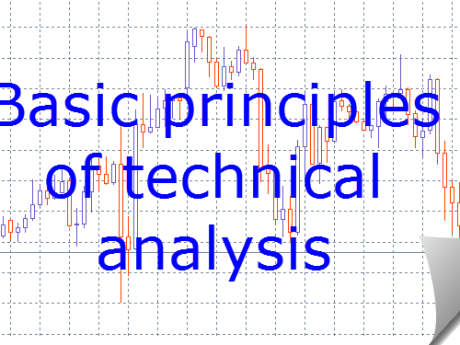Introduction to Technical Analysis Forex Principles
Post on: 13 Май, 2015 No Comment

Introduction to Technical Analysis
Technical analysis relies on price history to predict future prices in the foreign exchange market and other financial markets. Another method for analyzing the market is fundamental analysis whereby the analyst tries to predict future currency prices by gauging the strength of a countrys economy, trade performance, and in general, the intrinsic worth of the currency. In contrast, technical analysts work on the premise that the market discounts all fundamental information. That is, the market knows all market information that may result in price changes before the information becomes public. Therefore, by studying past price performance, you can get the markets perception of market fundamentals. There are 5 major categories when it comes to technical analysis.
1. Indicators
A technical indicator is a graphical representation of currency price movements. Some common indicators include:
Moving Averages Convergence-Divergence: This is one of the most effective yet simplest momentum indicators. It uses two moving averages, which are trend following indicators into a momentum oscillator.
Support and Resistance: These are the floor and ceiling of price movements respectively. These points are used in trend trading.
Trend Lines: Just like support and resistance, trend lines reviews recent price history and identifies patterns.
2. Number Theory
Forex number theories are based on the study of how prices change over time in repeated predictable patterns.
Gann theory: This is a number theory based on the concept of price, patterns, and time periods and their market effects.
Fibonacci theory: This is the use of Fibonacci numbers to build strong resistance and support levels which are used to find take profit and set stop levels.
Wave theories such as the Elliot wave theory work on the premise that currency prices, trends, and momentum change in cycles or patterns that are similar to each other. Therefore, Forex traders use Elliot wave oscillators to forecast future price movements based on past price behaviors.
There are moments when some events occur that result in a drastic expectation of currency exchange, resulting in a big price difference without any significant change in market volume traded. This mostly happens during the weekend when markets are closed and an event happens during the weekend when the broker is not making any updates to the price charts. These gaps are represented by previous closing prices against current opening prices.
Success in the Forex market largely depends on trading in the right market direction. Thus, following trends is one of the best strategies for profitability. Forex technical analysts use some tools for identifying bullish and bearish trends.
Moving Averages: Moving averages are used for identifying extended price movements in a particular direction.
Bollinger Bands: These are used to identify price volatility levels for a currency pair in real time.














